
4 minute read
KOORINGAL
Offers proven and promising young sires with the world’s finest bloodlines at affordable fees
Merchant Navy
Advertisement
Fastnet Rock - Legally Bay by Snippets
Gr1 winner, now Gr1 sireNEW to Kooringal Sire of Gr1 Goodwood winner
$582k and talented
FEE: $13,200 inc GST (LFG, conditions apply)
Prized Icon
Finance Tycoon
Written Tycoon - Darook Park by Darci Brahma
Multiple Gr3 winner, Gr1 Blue Diamond 4th, by Champion Australian Sire
NEW to Kooringal
Second season FEE: $11,000 inc GST (LFG, conditions apply)
Sandbar
Snitzel - Tallow by Street Cry
Gr1 Golden Rose 4th, SW sprinter, 3/4 brother to Golden Slipper winner Farnan
The ideal stallion prospect for Australian racing, oldest will be 2024 yearlings
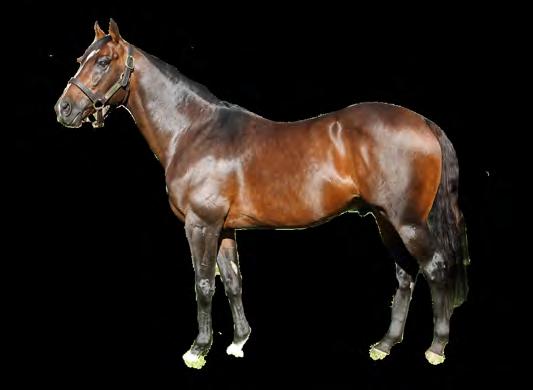
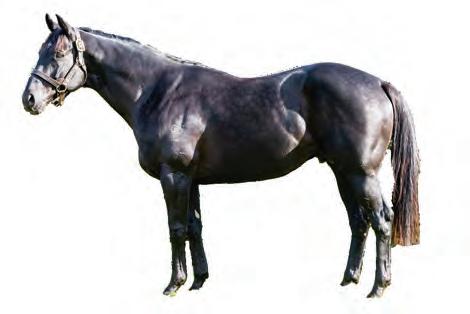
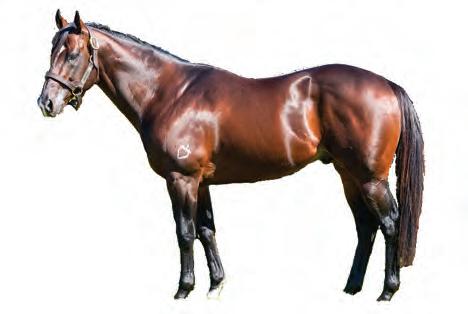
2023 FEE: $8,800 inc GST (LFG, conditions apply)
More Than Ready - Tropical Affair by Danehill
Gr1 winning 2yo, sire of Sydney metro winner
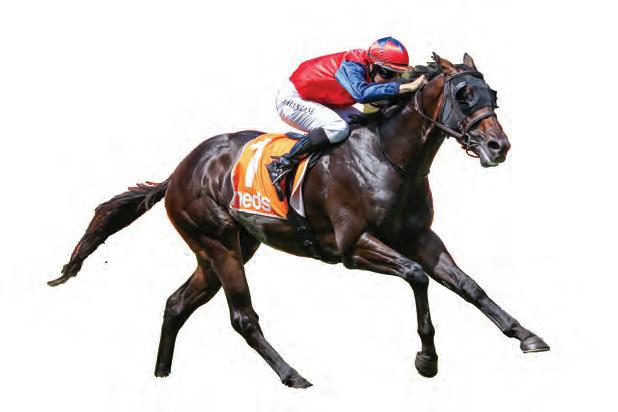
Tropical Squall from first few starts
Multiple Gr1 winning stallion with proven bloodlines
2023 FEE: $8,800 inc GST (LFG, conditions apply)
The Brothers War
War Front - Moon Queen by Sadler’s Wells
One of Australia’s most consistent sires of winners including $1.8million earner Cap’s Boy (Telecom Fighters HK), SW ANCESTRY 9wins $547k and Gr3 3rd Jalmari
2023 FEE: On application most likely source of the original C-gene for speed.”

For much of the next two hundred and fifty years plus, the speed gene maintained a relatively very low frequency level but figures to have thrived in its limited opportunities at shorter distances. Otherwise, the speed gene’s specific paths of transmission from genesis to modern times remains unknown.
The study was able to establish that the producer most responsible for the dramatic proliferation of the C-allele over the past sixty years or so was the Nearco stallion Nearctic (1954), known of course for siring the great Northern Dancer. The data would show contemporary racehorses with the C/C genotype traced back to Nearctic in significantly greater measure than Nearco’s two other breedshaping sire sons Nasrullah and his three-quarter brother Royal Charger, both undisputed Brilliant chefs-de-race. At this point I cannot help but digress, for in the 1990s, the classification of chefs-de-race (breed-shaping stallions) had somehow become a hot-button issue and fights could break out among pedigree mavens over some pretty esoteric stuff. One of the noisiest of these was played out on the pages of America’s Daily Racing Form and Blood-Horse over much of 1993 and ’94 after yours truly, as member of a Dosage advisory panel, wrote a paper recommending the classification of Nearctic to Brilliant chefde-race status. The subsequent unanimous 7-0 vote meant most pedigrees would have slightly higher dosage figures reflecting an additional measure of speed to be accounted for. What I failed to take into account is that the move could disrupt well-known dosage pioneer Dr. Steve Roman’s perfect record of Kentucky Derby winners with an index of 4.00 or under. Having long spurned joining our panel, Roman immediately went on the offense. “This work is cause for alarm” he wrote in the DRF. “It is an outrageous perversion of the principles and standards of dosage as understood by the racing public”. And with that spirited flurry, it seemed as if everyone with a turf column chimed in. The Nature Communications article was a nice surprise almost twenty years later. Another example of what DNA evidence can provide years later.
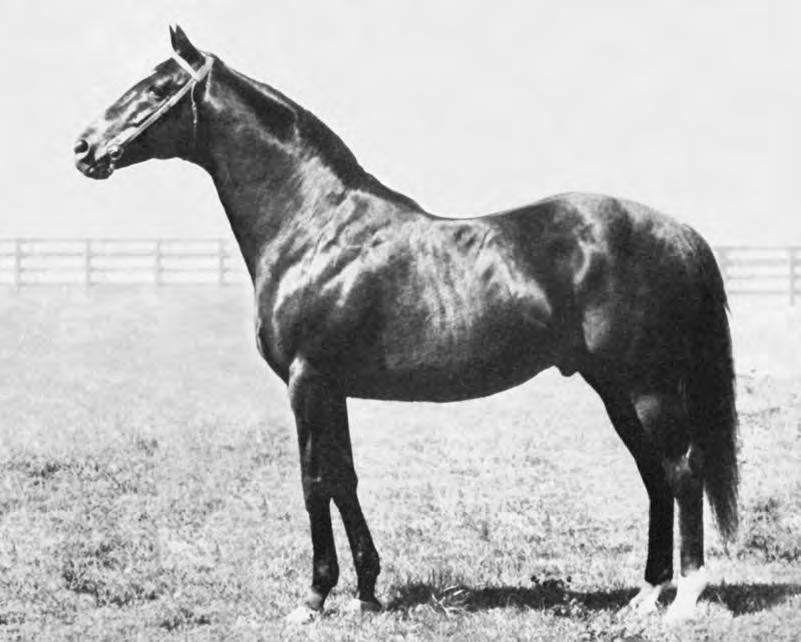
Nearctic’s five generation pedigree features three strains of Canterbury Pilgrim highlighted in bold red. As such, he is himself an RF. Important sires within his pedigree proven to carry the T/T genotype for the MSTN gene represent pathways that cannot convey the C-allele. These include Nearctic’s paternal great-great grandsire Polymelus, the three strains of St. Simon that appear in his pedigree’s fifth generation, his broodmare sire Hyperion and Hyperion’s broodmare sire St. Frusquin (all highlighted in bold blue). From where then did Nearctic inherit his speed gene? The answer figures to require more MSTN genotyping of important past sires
NEARCTIC (CAN) Brown colt, 1954
Phalaris
Pharos
NEARCO Br 1935
Nogara Hyperion
LADY ANGELA Ch 1944
Sister Sarah
Scapa Flow
Havresac Catnip
Gainsborough
Selene Abbots Trace Sarita and dams whose skeletal specimens are still archived. Hopefully somewhere, there is a sample from beyond a century ago of a key thoroughbred who carried the C/T signature.
Last year, Darley stallion Cracksman was novelly advertised as C/C for the speed gene. World class from a mile and a quarter to a mile and a half, he had plenty of sources of speed in his pedigree to help explain the seemingly
Polymelus Bromus
1 Chaucer
Anchora
Rabelais
Hors Concours
Spearmint
Sibola
Bayardo
Rosedrop
1 Chaucer
Serenissima
Tracery
Abbots Anne
1 Swynford
Molly Desmond
Sainfoin Cheery
St Simon Canterbury Pilgrim
Love Wisely Eryholme
St Simon Satirical
Ajax Simona
Carbine Maid of the Mint
The Sailor Prince (GB) Saluda
Bay Ronald Galicia
St Frusquin
Rosaline
St Simon
Canterbury Pilgrim
Minoru Gondolette
Rock Sand Topiary
Right-Away Sister Lumley
John o’ Gaunt Canterbury Pilgrim
Cyllene Maid Marian Desmond Pretty Polly incongruous genotype. The best of Cracksman’s first crop, this season’s unbeaten French Derby winner Ace Impact is stoutly bred so it will be interesting to see what was the intent as well as the results.

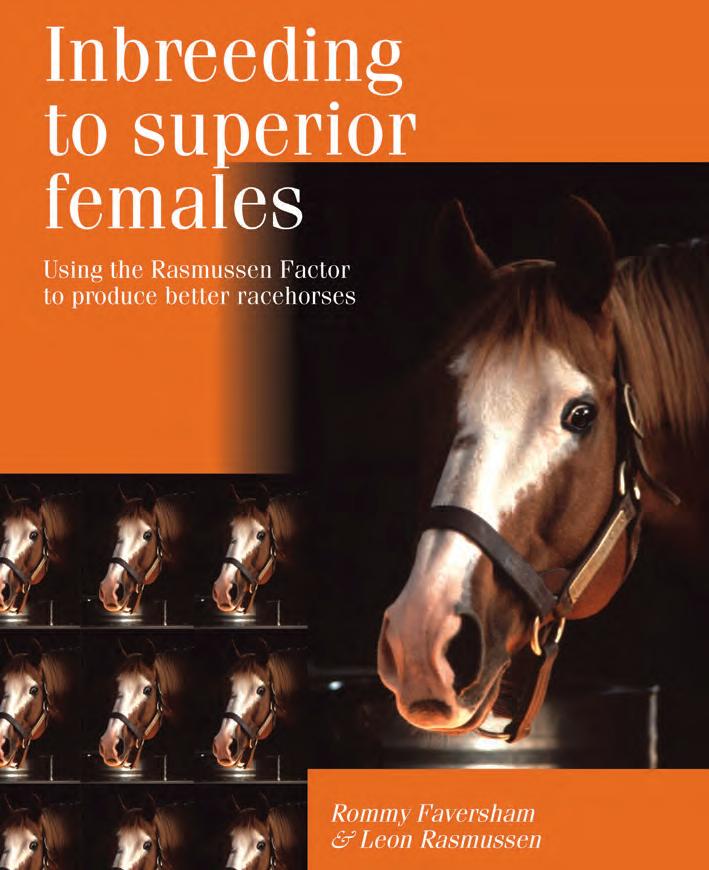
More important stuff on chromosomes
Another international team of geneticists also led by Dublin professor Emmeline Hill released an update of their work at the end of 2022 in which they identified seven genes, G6PC2, HDAC9, KTN1, MYLK2, NTM, SLC16A1 and SYNDIG1, which are shown to have central roles in muscle, metabolism, and neurobiology. Variation of these genes can be used to exploit genetic improvements within race horse populations who are in preparation for specific types of racing.
The G6PC2 gene encodes for a key enzyme in glucose metabolism. HDAC9 gene variants are associated with the maximal oxygen uptake (VO2max) in response to training. MYLK2 has a critical role in muscle contraction. NTM encodes for neurotrimin, which functions in brain development to regulate neural growth and synapse formation which, in turn, influences learning and memory. The NTM locus was found to be most closely associated with the number of racecourse starts. The protein produced by the SYNDIG1 gene regulates the development of excitatory synapses. These, then, are the new key drivers of the racing phenotype and they bring a whole new meaning to the expression, “checking all the boxes”.
What about A.I.?
Artificial intelligence is very different from ‘classic’ laboratory science. It is the transfer of our abilities to perceive, synthesize and infer information to non-living operators, a promethean venture if there ever was one. Things get rather moot when the potential of A.I. is considered. Breeding, racing, handicapping - they will all certainly become something quite different. For now, one can get a taste of artificial intelligence by downloading the app ChatGPT, already the fastest growing consumer software in history despite its well known tendency to ‘confidently provide inaccurate information’ (Wikipedia). When I decided to question it on some breeding theory the program arrived at the conclusion that, “the intentional practice of female family inbreeding is not considered a recommended approach”. What do you know? Another critic.





